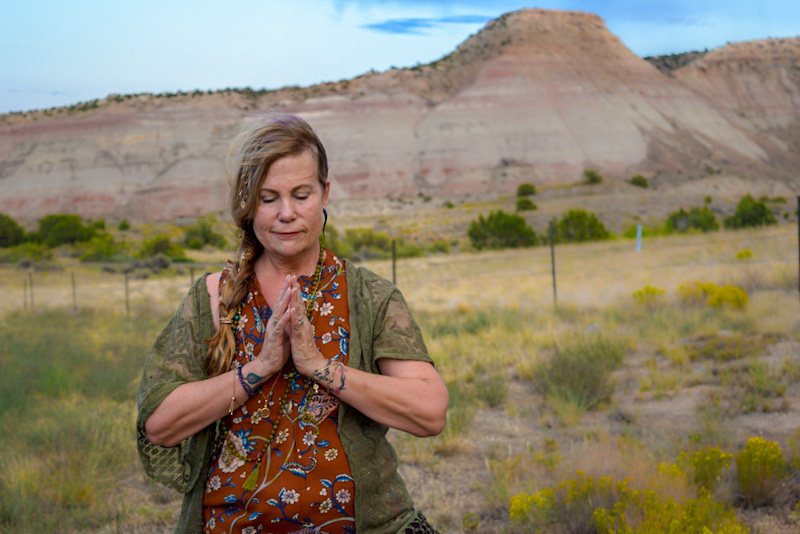Talk Sober Live: Quick Yoga Techniques for Mastering Tough Moments in Recovery
Heather Hagaman, a trauma-informed yoga therapist in recovery, joined All Sober to teach the PAUSE method for anchoring yourself during an "emotional storm" — anytime, anywhere

There usually isn’t time for a long, intensive yoga session when stress, anger, fear and anxiety strike. Heather Hagaman knows that, not just from her expertise in yoga therapy for trauma treatment but also from her 21 years in recovery. But an essential concept of yoga — tuning in to your body — can be practiced at any time, in any setting. Hagaman joined All Sober from her Beloved Yoga studio in Reston, Virginia, on the Sept. 28 episode of our Talk Sober interview and video series, to tell us more.
“Trauma-informed therapy is about learning how to pause when we are bombarded by unpleasant emotions, learning how to pause and befriend our body,” Hagaman said. During the segment, which aired on Facebook Live, she guided us through two methods for dealing with flare-ups of these difficult, triggering emotions. The first, HALT, is an assessment tool: Am I hungry, angry, anxious, lonely or tired? The second, PAUSE, is a quick way to “self-regulate through breath and movement.” You can do it alone, or discreetly, in the company of others; you don’t even need to stand.
PAUSE stands for Pursed-lips exhale, Anchor into the body, Use an affirmation and Stabilize Emotions. It’s a simple routine of deep breathing; touching, flexing and massaging the body; and talking through the moment in your head — combining sensations of physical presence with mental reassurances. PAUSE addresses a straightforward need for people in recovery, said Hagaman. “When I’m triggered, I start to do what I used to do. But how can I move away from the craving for the habit to using the PAUSE tool? How can I go to my body and reclaim my body in this healing process?”
Learn more about Hagaman’s practice of trauma-informed yoga therapy, find out how to PAUSE, and grab a screenshot of Hagaman’s tip sheet for next time you need to do it. Plus, follow All Sober on Facebook for more live segments coming up! In previous episodes, we’ve covered pharma crime in the opioid epidemic, recovery and music, and drug sentencing reform.
More Inspiration
Sobriety Roundtable: What's Your Favorite Sober Activity?
From roller derby to CrossFit and dog fostering to splurging on Mexican, nine sober folks shared what they do for fun and fulfillment. Get some ideas for your own Dry January or longer-term sobriety!
Subs & Drugs & Rock & Roll, Part 3: 'I'm a Loser (And I'm Not What I Appear To Be)'
Don Fertman reaches bottom as the jelly donut hits the wall. The latest installment of the longtime Subway exec's memoir.
The Joy of Baking (Sober)
Two months sober, Annie Zimmerman decided to make cookies. Now, her hobby turned passion yields fulfillment, connection and delicious soberversary cakes. Read the interview!
Subs & Drugs & Rock & Roll, Part 2: A Day in the Life
Don Fertman woke up one morning 40 years ago and poured himself a drink, as usual. But the future Subway exec didn't know this day would be far from ordinary.
Running Toward Recovery
Seeking purpose in early recovery, Annie Zimmerman rekindled an old fire with distance running — and found it carried her through some of her toughest trials in sober life.
Closer to the Shore
On Ben Tuff's third day in inpatient treatment, he had a surprising encounter that would eventually lead him to attempt a grueling 24-mile swim across the Narragansett Bay.
Subs & Drugs & Rock & Roll, Part 1: With a Little Help From My Friends
Don Fertman, longtime Subway exec, writes about a pivotal moment in his 40 years of sobriety: what happened after he went public about his recovery on "Undercover Boss."
Sober Holiday Tips: Meeting 'Share-a-Thons'
Need to get out of the house for a bit and see some friendly sober faces? Recovery support group meeting marathons run 24/7 from Christmas Eve through New Year's Day.












